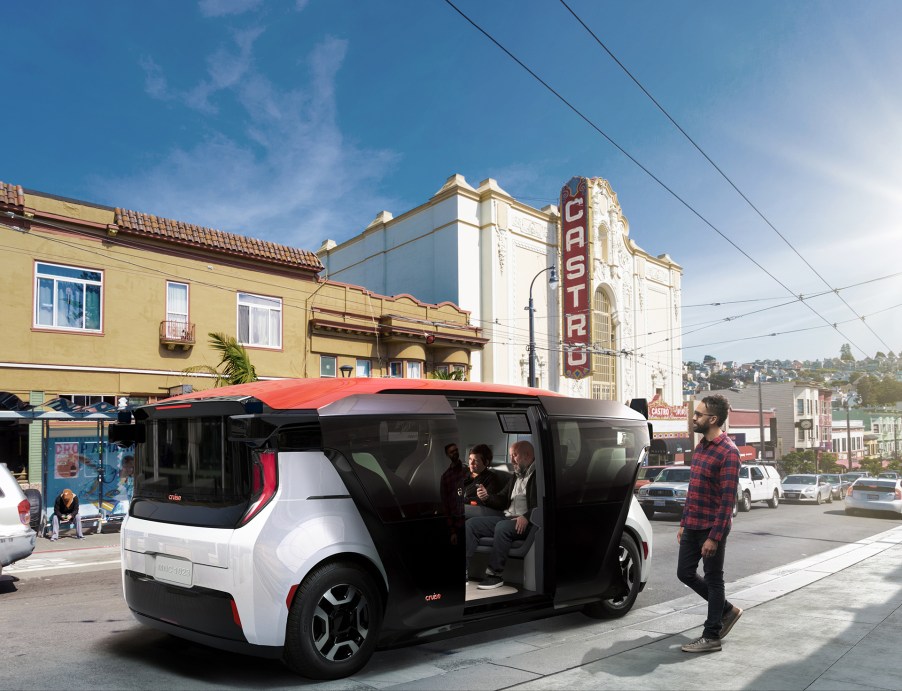
The Cruise Origin Is a People Mover With No Driver
There are many self-driving car companies in different states currently testing their products to see who can bring their car to market first, whether it be for delivery or public transport. One of the more prominent players in the self-driving race is Cruise, a self-driving car company that is partnered with General Motors.
Cruise has been actively testing their autonomous car in San Francisco for the past few years and just recently unveiled the Cruise Origin, which is a shuttle with no steering wheel, pedals, or even a driver.
Thinking outside the box
The Cruise Origin was unveiled back in January at the company’s “Moving beyond the Car” event in San Francisco. It looks like a giant futuristic box on wheels, and technically, it is. The Origin will be Cruise’s second-biggest leap in the autonomous future by provided public mobility.
It’s basically a bus with no driver. Type in a code and step in through the sliding glass doors and you’ll notice two opposing bench seats that can accommodate up to four adults, however, six is possible if needed.
There’s a very generous amount of room between the seats so legroom is hardly an issue, and there’s even space underneath the seats to accommodate a small carry-on bag. There will be additional storage in the front and back of the vehicle and passengers will have access to charging ports and the door controls near their seats.
Sitting across from each seat will be a screen that will show the Origin’s next stop along the route and when new passengers enter the vehicle and buckle up, they can press a button to get the vehicle going again.

A long road ahead
While an autonomous bus might seem like a logical step into the future of public transportation, Cruise still has a long way to go to get to their destination.
Although the project is partially funded by Honda, it will require a lot of development and testing in order to get a fully working prototype on the road. And Cruise should know full well about testing and development.
The company has spent the last four years testing its fleet of self-driving Chevy Bolts all over the city of San Francisco. They have built three different generations of the vehicle, consistently updating their radar and Lidar hardware to improve the vehicle’s “sight” capabilities.
According to Car and Driver, Cruise didn’t mention anything about the battery, size, power rating, charging, or the sensors used on the forthcoming Origin. But they did say that it will be rear-wheel drive and last for a “million miles.”

Taking the easier route
While the question of the general public is ready for Level 4 (no pedals, no steering wheel, limited range) autonomous cars still remains, we think that the Cruise Origin will be the more natural way to go when it comes to gaining public trust.
However, the CEO of Cruise, Dan Ammann, did mention to Car and Driver that they are still planning to roll out the ride-share program with the Chevy Bolts first before finally getting the Origin into production. When? We’ll just have to find out.



